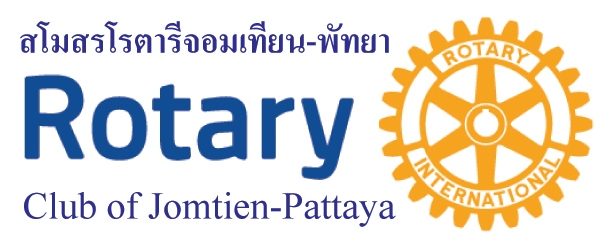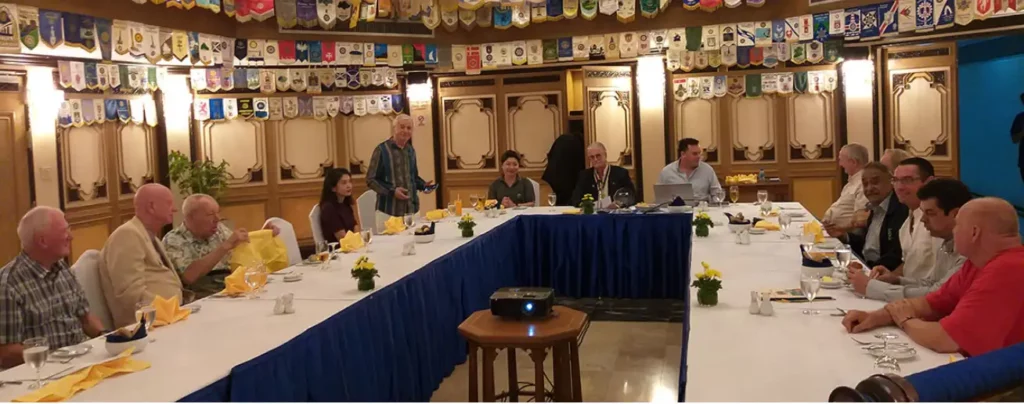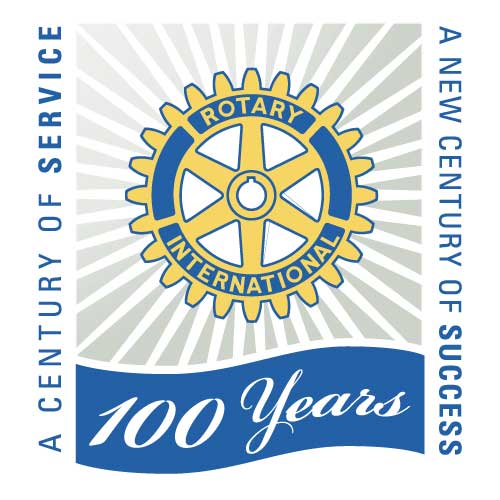
An Idea..
a young lonely lawyer in Chicago, Paul Harris, thought one day 104 years ago. He had decided to invite three people he knew to join him for a meal one evening, in an effort to forge fellowship and make friends.
That evening was so successful they agreed to meet regularly and after a while thought they would form a club, so others could join them. As they were rotating their meetings between each others homes and offices they decided to call it a Rotary Club.
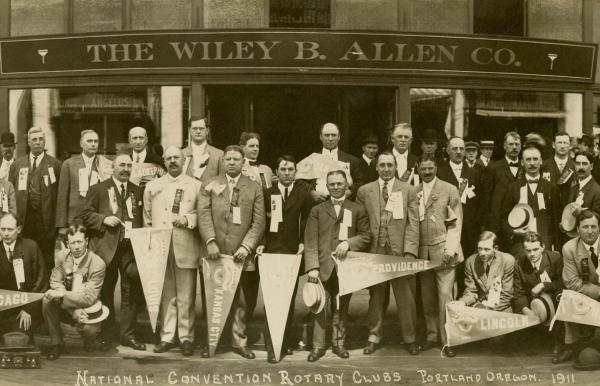
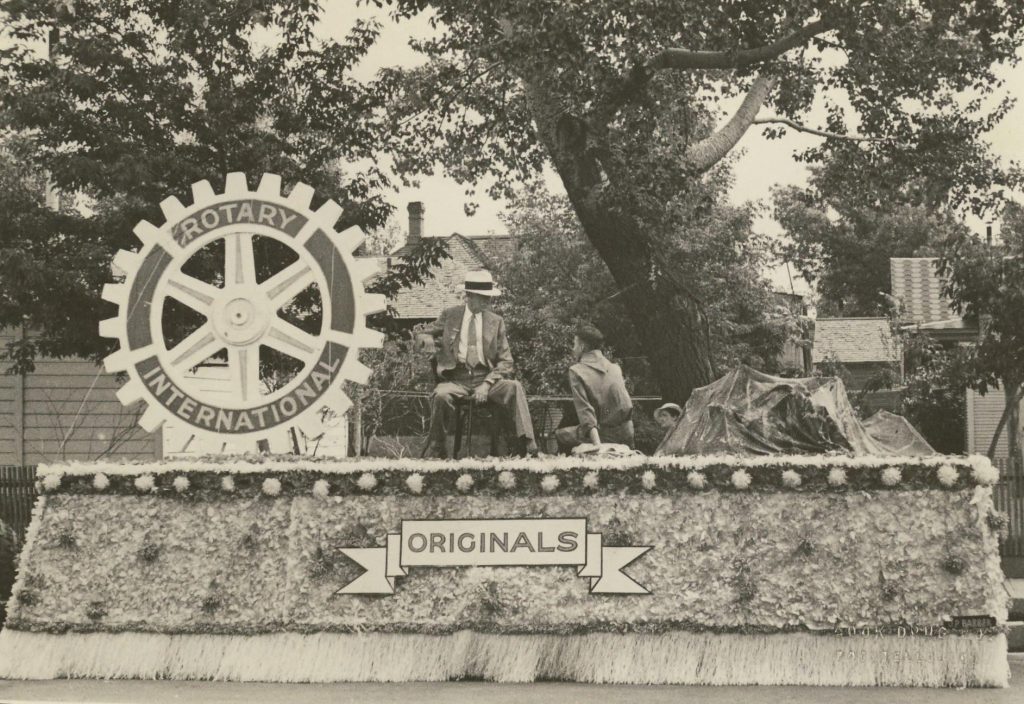
The Club quickly expanded and this popular idea was copied in other American cities, all called The Club quickly expanded and this popular idea was copied in other American cities, all called Rotary Clubs and working closely together. Several years later a member in Chicago said, “I’ve got an idea”, why don’t we raise funds to help those less fortunate than ourselves ? And so the Rotary humanitarian efforts were started, also emulated by the other Clubs springing up around the U.S.A
This was when another proud tradition began, and still closely followed today – Rotarians give their time and work freely so any charity project benefits fully from funds raised. There are no huge salaries being scooped at the expense of the poor and needy.
A Club was then formed in Canada, and in 1911 the first European Club opened in Dublin. From here on Clubs were started in many different countries and Rotary slowly became the international organization it is today.
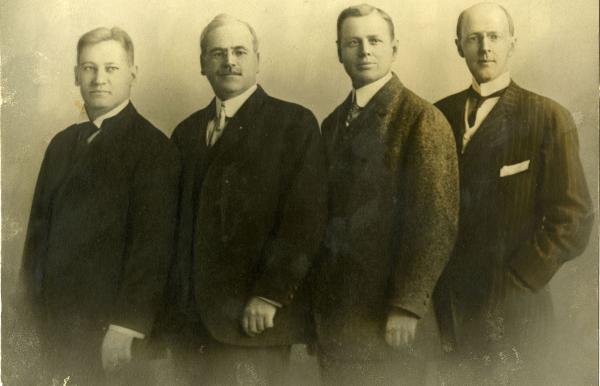
Rotarian Arch C. Klumph said in 1917, “I’ve got an idea”, why don’t we start a fund to address the wants of the disadvantaged around the world?
Contributed to by the many Clubs worldwide the Rotary Foundation fund was established, growing into a multimillion dollar entity. In 1985, in conjunction with the World Health Organisation and others the Rotary Foundation set out to completely eradicate polio from all countries, and except for very small pockets in extremely remote places has now almost achieved that tremendous and ambitious aim, saving countless lives.
Although not in any way a secret organisation and absolutely non-political, over the years Rotary Clubs have been banned in various places , for example in Russia and other communist countries, Franco’s Spain and Hitler’s Germany. Happily there are few countries now which will not allow Rotary to function.
Today Rotary International is the largest service organisation of its kind in the world, with over 1.2 million members in 32,000 Clubs spread throughout 200 countries. A Rotarian is sure of a warm welcome virtually anywhere in the world.
Paul Harris died in 1947, but his original ideals and aspirations are still there, with fellowship being the lynchpin bringing together managerial and professional men and women of all colours and creeds, who practice sound personal and business ethics. Throughout it’s history Rotary has been molded and honed by such people who have said, “I’ve got an idea.”
Lloyd Jones, of the English speaking Rotary Club of Jomtien-Pattaya, said, “Since I joined Rotary I have made many friends and with my family very much enjoyed the times we’ve spent with people similar to ourselves. The fellowship is great, and I get a fantastic amount of satisfaction in helping those less fortunate than myself.

Well established, but forever moving forward with the times, modern Rotary welcomes new members, especially those who can say, “I’ve got an idea.”
The world’s first service club, the Rotary Club of Chicago, Illinois, USA, was formed on 23 February 1905 by Paul P. Harris, an attorney who wished to recapture in a professional club the same friendly spirit he had felt in the small towns of his youth. The name “Rotary” derived from the early practice of rotating meetings among members’ offices.
Rotary’s popularity spread throughout the United States in the decade that followed; clubs were chartered from San Francisco to New York. By 1921, Rotary clubs had been formed on six continents, and the organization adopted the name Rotary International a year later.
As Rotary grew, its mission expanded beyond serving the professional and social interests of club members. Rotarians began pooling their resources and contributing their talents to help serve communities in need. The organization’s dedication to this ideal is best expressed in its principal motto: “Service Above Self. Rotary also later embraced a code of ethics, called “The 4-Way Test”, which has been translated into hundreds of languages.
During and after World War II, Rotarians became increasingly involved in promoting international understanding. A Rotary conference held in London in 1942 planted the seeds for the development of the UNESCO, and numerous Rotarians have served as consultants to the United Nations.
An endowment fund, set up by Rotarians in 1917 for “doing good in the world,” became a non-profit organization known as The Rotary Foundation in 1928. Upon the death of Paul Harris in 1947, an outpouring of Rotarian donations made in his honor, totaling US$2million, launched the Foundation’s first program – graduate fellowships, now called Ambassadorial Scholarships. Today, contributions to The Rotary Foundation total more than US$80 million annually and support a wide range of humanitarian grants and educational programs that enable Rotarians to bring hope and promote international understanding throughout the world.
At the dawn of the 21st century, Rotary worked to meet the changing needs of society, expanding its service effort to address such pressing issues as environmental problems, illiteracy, world hunger and women and children at risk. The organization admitted women for the first time in 1989 and today claims more than 90,000 women members. Following the collapse of the Berlin Wall and the dissolution of the Soviet Union, Rotary clubs were formed or re-established throughout Central and Eastern Europe. Today, 1.2 million Rotarians belong to some 30,000 Rotary clubs in more than 160 countries.
The Foundation was created in 1917 by Rotary
International’s sixth president, Arch C. Klumph, as an endowment fund for Rotary “to do good in the world.” It has grown from an initial contribution of US$26.50 to more than US$ 117.9 million contributed in 2004-05. Its event-filled history is a story of Rotarians learning the value of service to humanity.
The Foundation’s Humanitarian Programs fund international Rotary club and district projects to improve the quality of life, providing health care, clean water, food, education, and other essential needs primarily in the developing world. One of the major Humanitarian Programs is Polio Plus, which seeks to eradicate the poliovirus worldwide. Through its Educational Programs, the Foundation provides funding for some 1,200 students to study abroad each year. Grants are also awarded to university teachers to teach in developing countries and for exchanges of business and professional people. Former participants in the Foundation’s programs have the opportunity to continue their affiliation with Rotary as Foundation Alumni.
History of The Rotary Foundation
In 1917, Arch C. Klumph, Rotary’s sixth president, proposed to the Rotary
International Convention in Atlanta, Georgia, USA, the creation of an “endowment fund for Rotary… for the purpose of doing good in the world in charitable, educational, and other avenues of community service.” A few months later, the endowment received its first contribution of $26.50 from the Rotary Club of Kansas City, Missouri, USA.
In 1928, when the endowment fund had grown to more than US$5,000, the fund was renamed The Rotary Foundation, and it became a distinct entity within Rotary International. Five Trustees, including Klumph, were appointed to “hold, invest, manage, and administer all of its property… as a single trust, for the furtherance of the purposes of RI.”
Two years later, the Foundation made its first grant of US$500 to the International Society for Crippled Child. The ISCC-created by Rotarian Edgar F. “Daddy” Allen-later grew into the Easter Seals organization.
The Great Depression and World War II both impeded significant growth for the Foundation, but the need for promoting a lasting world peace generated great post-war interest in developing the Foundation. After Rotary founder Paul R Harris died in 1947, contributions began pouring into Rotary International, and the Paul Harris Memorial Fund was created for the purpose of building the Foundation.
That same year, the first Foundation program-the forerunner of the Rotary Ambassadorial Scholarships program-was established. Then in 1965-66, three new programs were launched-Group Study Exchange, Awards for Technical Training, and Grants for Activities in Keeping with the Objective of The Rotary Foundation, which was later called Matching Grants.
The Health, Hunger and Humanity (3-H) program was launched in 1978, with the Rotary Volunteers program being created as a part of 3-H in 1980. The Polio Plus program was announced in 1984-85, and the following year saw the introduction of Rotary Grants for University Teachers. The first Peace Forums were held in 1987-88, leading to the establishment of Rotary Peace Programs. Then in 1989,1963- 64 RI President Carl P. Miller and his wife, Ruth, donated US$ 1 million to establish the Discovery Grants program.
Throughout this time, support of the Foundation grew tremendously. Since that first $26.50 donation in 1917, the Foundation has received contributions totaling more than US$1 billion. More than US$70 million was contributed in 2003-04 alone. To date, some 914,792 inpiduals have been recognized as Paul Harris Fellows-that is, someone who has contributed US$ 1000 or has had that amount contributed in his or her name.
Such strong support and involvement of Rotarians worldwide ensures a secure future for The Rotary Foundation as it continues its vital work for international understanding and world peace.

